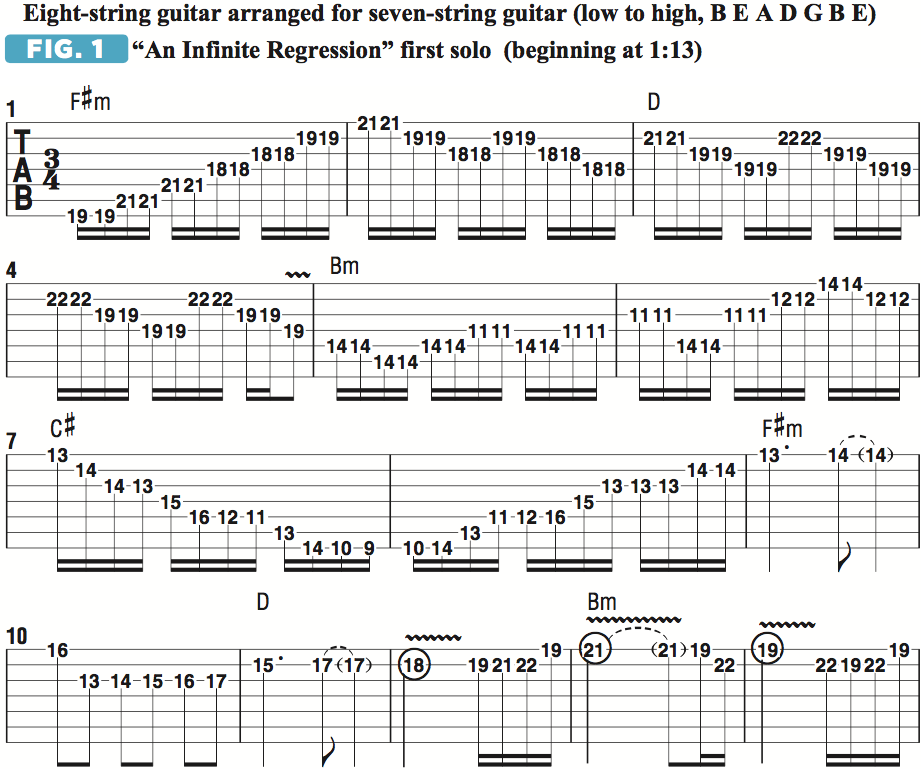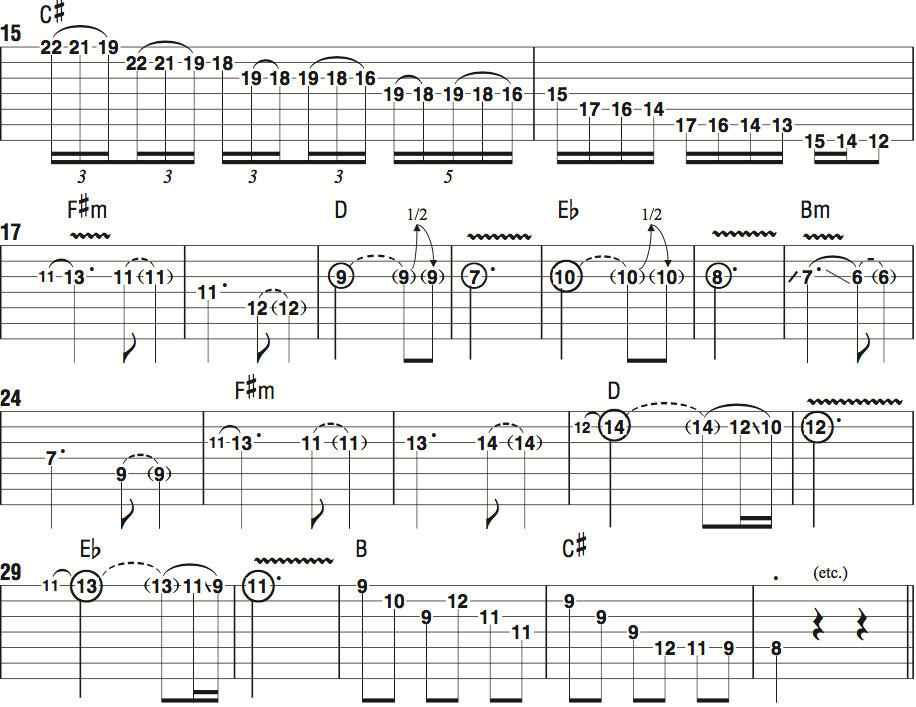Tosin Abasi's comprehensive introduction to double picking
Pick up a useful technique from the Animals as Leaders guitarist
This month, I'd like to talk about a cool, useful technique I sometimes use called 'double picking,' which involves repeating each note in a melody twice using alternate (down-up) picking. A good example of this technique can be found in the first solo I play in An Infinite Regression, from Animals as Leaders’ latest release, Weightless.
I begin over an F#m chord and play an F#-sus2 arpeggio across bars 1 and 2, sticking with a rhythm of straight 16th notes while double-picking each different note. This creates a melody-within-a-melody effect, as your ear hears a slower eighth-note idea within the 16th-note rhythm, almost as if you were tremolo picking.
In bars 3 and 4, I change the fretboard shape slightly to acknowledge the underlying D chord, with brief use of the sharp four, G#, which I immediately resolve up a half step, to A, the fifth of D. I use the same approach in bars 5 and 6 over Bm, but here I truncate the idea by starting on the B root note on the A string’s 14th fret before moving down and then back up again.
Across bars 7 and 8, I play a quick descending-ascending line over the five (V) chord, C#, using notes from the C# Phrygian- dominant mode (C# D E# F# G#A B), which is the fifth mode of F# harmonic minor (F# G# A B C# D E#).
I switch to much simpler and more melodic lines in bars 9–14, outlining the same F#m-D- Bm chord progression of bars 1–6. At bar 15, however, I play a fast C# Phrygian-dominant descending line again, using 16th-note triplets, quintuplets and 16th notes. The solo wraps up with a restatement of the melodic approach of bars 9–14, but at bar 21, I introduce a new chord to the progression, Eb, which affords a shift in harmonic content to what is already a shifty harmonic environment. I finish up in bars 31 and 32 with straight eighth notes and use descending fourths to outline the B-to-C# chordal movement.
Overall, this is a challenging solo to play up to speed, so I encourage you to take it one bar at a time and gradually work it up to tempo. Once you have the shapes down, you’ll find that it’s not as difficult to play as it may seem.


Get The Pick Newsletter
All the latest guitar news, interviews, lessons, reviews, deals and more, direct to your inbox!










